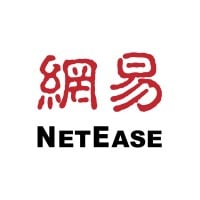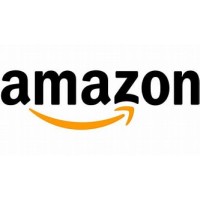Company Cyber Security Posture
NANA
NA Company Details
NA
NA
NA
NA
NA
NA
Scan still pending
NA
NA
Between 200 and 800
This score is AI-generated and less favored by cyber insurers, who prefer the TPRM score.
 NA Global Score
NA Global Score.png)

Company Scoring based on AI Models
| Model Name | Date | Description | Current Score Difference | Score |
|---|---|---|---|---|
| AVERAGE-Industry | 03-12-2025 | This score represents the average cybersecurity rating of companies already scanned within the same industry. It provides a benchmark to compare an individual company's security posture against its industry peers. | N/A | Between 200 and 800 |
Company Cyber Security News & History
| Entity | Type | Severity | Impact | Seen | Url ID | Details | View |
|---|
Company Subsidiaries

NA
Access Data Using Our API

Get company history
.png)
NA Cyber Security News
The role of the cybersecurity PM in incident-driven development
From PowerShell abuse to USB data theft, modern threats hit fast—and hard.vSee how security-minded PMs are responding with real-time ...
Introducing the smarter, more sophisticated Malwarebytes Trusted Advisor, your cybersecurity personal assistant
Malwarebytes Trusted Advisor has had an update, and it's now sharper, smarter, and more helpful than ever.
Trump AI plan calls for cybersecurity assessments, threat info-sharing
The U.S. government will expand information sharing, cyber risk evaluations and guidance to the private sector to address the cybersecurity ...
Analyst Bullish on Crowdstrike Holdings (CRWD) Says Cybersecurity Could Be ‘Biggest Subsector’ For Tech
Crowdstrike Holdings Inc (NASDAQ:CRWD) is one of the 10 Buzzing Stocks Everyone is Talking About. Wedbush's Dan Ives was recently asked ...
Microsoft Used China-Based Support for Multiple U.S. Agencies, Potentially Exposing Sensitive Data
Microsoft says it will no longer use China-based engineers to support the Pentagon. But ProPublica found that the tech giant has relied on ...
Automated mobile robots are a cybersecurity risk
Like every software-driven and internet-connected system, robotic automation requires insightful protection. Here's what you need to know.
Patchwork Targets Turkish Defense Firms with Spear-Phishing Using Malicious LNK Files
Patchwork targets Turkish defense firms with LNK phishing to steal UAV, missile data amid geopolitical tension.
Sean Plankey vows to boot China from U.S. supply chain, advocate for CISA budget
President Donald Trump's pick to lead CISA told senators Thursday that he would prioritize evicting China from the U.S. supply chain.
Outtake’s agents resolve cybersecurity attacks in hours with OpenAI
Outtake's cybersecurity agents automate detection and remediation with speed and precision enterprise security teams can trust.

NA Similar Companies

NetEase
As a leading internet technology company based in China, NetEase, Inc. (NASDAQ: NTES and HKEX:9999, "NetEase") provides premium online services centered around content creation. With extensive offerings across its expanding gaming ecosystem, NetEase develops and operates some of China's most popula

Sohu.com
Sohu.com Inc. (NASDAQ: SOHU) is China's premier online brand and indispensable to the daily life of millions of Chinese, providing a network of web properties and community based/web 2.0 products which offer the vast Sohu user community a broad array of choices regarding information, entertainment a

Flipkart
At Flipkart, we're driven by our purpose of empowering every Indian's dream by delivering value through innovation in technology and commerce. With a customer base of over 350 million, product coverage of over 150 million across 80+ categories, a focus on generating direct and indirect employment an

e&
We're a global technology group focused on innovation and collaboration to create a better future for all. Since 1976, we've been pioneering new technologies and expanding our reach to more people and places. Today, we provide services to over 163 million customers across 16 countries in the Middle

Amazon
Amazon.com is an ecommerce platform that sells many product lines, including media (books, movies, music, and software), apparel, baby products, consumer electronics, beauty products, gourmet food, groceries, health and personal care products, industrial & scientific supplies, kitchen items, jewelry

Independiente / Freelance
La etimología de la palabra deriva del término medieval inglés usado para un mercenario (free-independiente o lance-lanza), es decir, un caballero que no servía a ningún señor en concreto y cuyos servicios podían ser alquilados por cualquiera. El término fue acuñado inicialmente por Sir Walter Sc

Frequently Asked Questions
Explore insights on cybersecurity incidents, risk posture, and Rankiteo's assessments.
NA CyberSecurity History Information
How many cyber incidents has NA faced?
Total Incidents: According to Rankiteo, NA has faced 0 incidents in the past.
What types of cybersecurity incidents have occurred at NA?
Incident Types: The types of cybersecurity incidents that have occurred include .
Additional Questions
What Do We Measure?
















Every week, Rankiteo analyzes billions of signals to give organizations a sharper, faster view of emerging risks. With deeper, more actionable intelligence at their fingertips, security teams can outpace threat actors, respond instantly to Zero-Day attacks, and dramatically shrink their risk exposure window.
These are some of the factors we use to calculate the overall score:
Identify exposed access points, detect misconfigured SSL certificates, and uncover vulnerabilities across the network infrastructure.
Gain visibility into the software components used within an organization to detect vulnerabilities, manage risk, and ensure supply chain security.
Monitor and manage all IT assets and their configurations to ensure accurate, real-time visibility across the company's technology environment.
Leverage real-time insights on active threats, malware campaigns, and emerging vulnerabilities to proactively defend against evolving cyberattacks.




